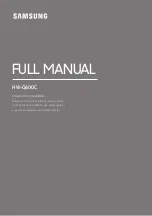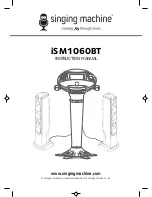
CUTMASTER 102
INTRODUCTION
Manual 0-4998
2T-2
G. Gas Requirements
Manual and Mechanized Torch Gas
Specifications
Gas (Plasma and Secondary)
Compressed Air
Operating Pressure
Refer to NOTE
60 - 95 psi
4.1 - 6.5 bar
Maximum Input Pressure
125 psi / 8.6 bar
Gas Flow (Cutting and
Gouging)
300 - 500 scfh
142 - 235 lpm
!
WARNING
This torch is not to be used with oxygen (O
2
).
NOTE
Operating pressure varies with torch model, operat-
ing amperage, and torch leads length. Refer to gas
pressure settings charts for each model.
H. Direct Contact Hazard
For standoff tip the recommended standoff is 3/16 inches
/ 4.7 mm.
2T.04 Options And Accessories
For options and accessories, see section 6.
2T.05 Introduction to Plasma
A. Plasma Gas Flow
Plasma is a gas which has been heated to an extremely
high temperature and ionized so that it becomes electri-
cally conductive. The plasma arc cutting and gouging
processes use this plasma to transfer an electrical arc to
the workpiece. The metal to be cut or removed is melted
by the heat of the arc and then blown away.
While the goal of plasma arc cutting is separation of the
material, plasma arc gouging is used to remove metals to
a controlled depth and width.
In a Plasma Cutting Torch a cool gas enters Zone B, where
a pilot arc between the electrode and the torch tip heats and
ionizes the gas. The main cutting arc then transfers to the
workpiece through the column of plasma gas in Zone C.
A-00002
Workpiece
Power
Supply
+
_
C
B
A
Typical Torch Head Detail
By forcing the plasma gas and electric arc through a small
orifice, the torch delivers a high concentration of heat to a
small area. The stiff, constricted plasma arc is shown in
Zone C. Direct current (DC) straight polarity is used for
plasma cutting, as shown in the illustration.
Zone A channels a secondary gas that cools the torch. This
gas also assists the high velocity plasma gas in blowing
the molten metal out of the cut allowing for a fast, slag -
free cut.
B. Gas Distribution
The single gas used is internally split into plasma and
secondary gases.
The plasma gas flows into the torch through the negative
lead, through the start cartridge, around the electrode, and
out through the tip orifice.
The secondary gas flows down around the outside of the
torch start cartridge, and out between the tip and shield
cup around the plasma arc.
C. Pilot Arc
When the torch is started a pilot arc is established between
the electrode and cutting tip. This pilot arc creates a path
for the main arc to transfer to the work.
Содержание CUTMASTER 102
Страница 4: ...This Page Intentionally Blank ...
Страница 20: ...CUTMASTER 102 INTRODUCTION Manual 0 4998 2T 4 This Page Intentionally Blank ...
Страница 26: ...CUTMASTER 102 INSTALLATION Manual 0 4998 3T 2 This Page Intentionally Blank ...
Страница 30: ...CUTMASTER 102 OPERATION Manual 0 4998 4 4 This Page Intentionally Blank ...
Страница 46: ...CUTMASTER 102 OPERATION Manual 0 4998 4T 16 This Page Intentionally Blank ...
Страница 80: ...CUTMASTER 102 SERVICE Manual 0 4998 5 34 This Page Intentionally Blank ...
Страница 91: ...CUTMASTER 102 Manual 0 4998 PARTS LIST 6 9 A 07994_AB 1 4 2 3 5 6 7 8 9 10 12 11 10 13 ...
Страница 105: ...CUTMASTER 102 Manual 0 4998 APPENDIX A 5 This Page Intentionally Blank ...
Страница 111: ...This Page Intentionally Blank ...
















































